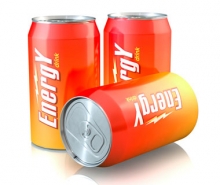Energy drinks linked to teen health risks

Researchers are calling for limits on teen’s access to the drinks and reduction in the amount of the caffeine in each can.
The paper by researchers at the University of Waterloo and Dalhousie University, published in Preventive Medicine, found that high school students prone to depression as well as those who are smoke marijuana or drink alcohol are more likely to consume energy drinks than their peers.
“While it remains unclear why these associations exist, the trend is a concern because of the high rate of consumption among teenagers,” said Sunday Azagba, a researcher at the Propel Centre for Population Health Impact at the University of Waterloo and lead author on the paper. “These drinks appeal to young people because of their temporary benefits like increased alertness, improved mood and enhanced mental and physical energy.”
Among the 8210 high school students surveyed, nearly two thirds reported using energy drinks at least once in the past year, with more than 20 percent consuming them once or more per month. Younger high school students were more likely to consume energy drinks than older ones.
“Marketing campaigns appear designed to entice youth and young adults,” said Azagba. “It’s a dangerous combination, especially for those at an increased risk for substance abuse.”
Energy drinks have been associated with a number of negative health effects, including cardiovascular symptoms, sleep impairment and nervousness and nausea. The side effects are caused by the beverages’ high concentration of caffeine.
“Given the negative effects of excessive caffeine consumption as well as the coincident occurrence of the use of energy drinks and other negative behaviors in teens, the trends we are seeing are more than cause for concern,” said Azagba.
In recent years energy drink sales have skyrocketed, with sales forecasted to reach $20 billion in 2013 in the United States alone.
“In our opinion, at the very least steps should be taken to limit teens’ access to energy drinks, to increase public awareness and education about the potential harms of these drinks and to minimize the amount of caffeine available in each unit,” said Azagba. “This won’t eliminate the problem entirely, but steps like these can help mitigate harm to our youth that appears to be associated with consumption of these drinks. This is something we need to take seriously. Change won’t happen without a concerted effort.”
The study was based on data from the 2012 Student Drug Use Survey, consisting of a representative sample of junior and senior high school students from three provinces in Atlantic Canada.
In just half a century, the University of Waterloo, located at the heart of Canada's technology hub, has become one of Canada's leading comprehensive universities with 35,000 full- and part-time students in undergraduate and graduate programs. Waterloo, as home to the world's largest post-secondary co-operative education program, embraces its connections to the world and encourages enterprising partnerships in learning, research and discovery. In the next decade, the university is committed to building a better future for Canada and the world by championing innovation and collaboration to create solutions relevant to the needs of today and tomorrow. For more information about Waterloo, please visit www.uwaterloo.ca.
Media Contact
Nick Manning
University of Waterloo
519-888-4451
226-929-7627
www.uwaterloo.ca/news
@UWaterlooNews
Attention broadcasters: Waterloo has facilities to provide broadcast quality audio and video feeds with a double-ender studio. Please contact us to book.
Media Contact
All latest news from the category: Health and Medicine
This subject area encompasses research and studies in the field of human medicine.
Among the wide-ranging list of topics covered here are anesthesiology, anatomy, surgery, human genetics, hygiene and environmental medicine, internal medicine, neurology, pharmacology, physiology, urology and dental medicine.
Newest articles

Superradiant atoms could push the boundaries of how precisely time can be measured
Superradiant atoms can help us measure time more precisely than ever. In a new study, researchers from the University of Copenhagen present a new method for measuring the time interval,…

Ion thermoelectric conversion devices for near room temperature
The electrode sheet of the thermoelectric device consists of ionic hydrogel, which is sandwiched between the electrodes to form, and the Prussian blue on the electrode undergoes a redox reaction…

Zap Energy achieves 37-million-degree temperatures in a compact device
New publication reports record electron temperatures for a small-scale, sheared-flow-stabilized Z-pinch fusion device. In the nine decades since humans first produced fusion reactions, only a few fusion technologies have demonstrated…





















